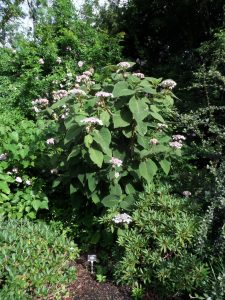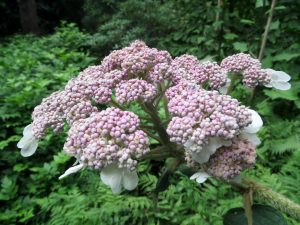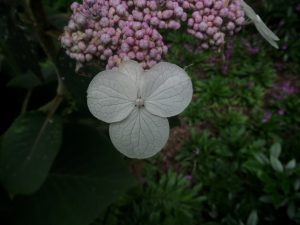Wilson’s collection number 772 was described as the new species, Hydrangea sargentiana, in Plantae Wilsonae, a three part series to enummerate and describe his collectionmade during this expedition.
As well as the preserved specimen there was an associated seed collection that was distributed by Arnold Arboretum. Some of those seed were sent to Sir John Stirling Maxwell who then, in turn, forwarded some on to the Royal Botanic Garden Edinburgh. Despite coming from a remote part of China, via the Arnold Arboetum in Boston, then through FRS Balfour at Dawyck who was dealing with UK distribution of the Arnold seed, to Stirling-Maxwell before RBGE recieved the seed on the 5th June 1908, only 10months after they were collected.
One of the plants grown from that seed collection is still alive and well in the living collection 108 year later and has been used as cutting material so we now have several plants in the Edinburgh and Benmore gardens.
Hydrangea sargentiana is not your average garden lacecap in fact as heather-reenges go, that’s the great scots word for them my gran used, it really is something special.

![Curtis's Botanical Magazine, London., vol. 138 [= ser. 4, vol. 8]: Tab. 8447](http://stories.rbge.org.uk/wp-content/uploads/2016/07/461px-Hydrangea_sargentiana_138-8447-231x300.jpg)


